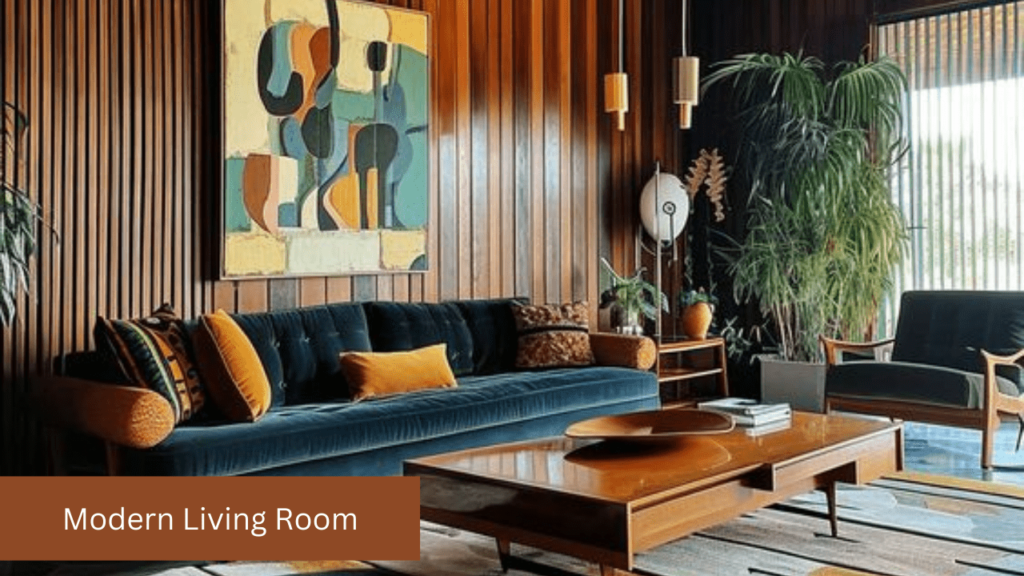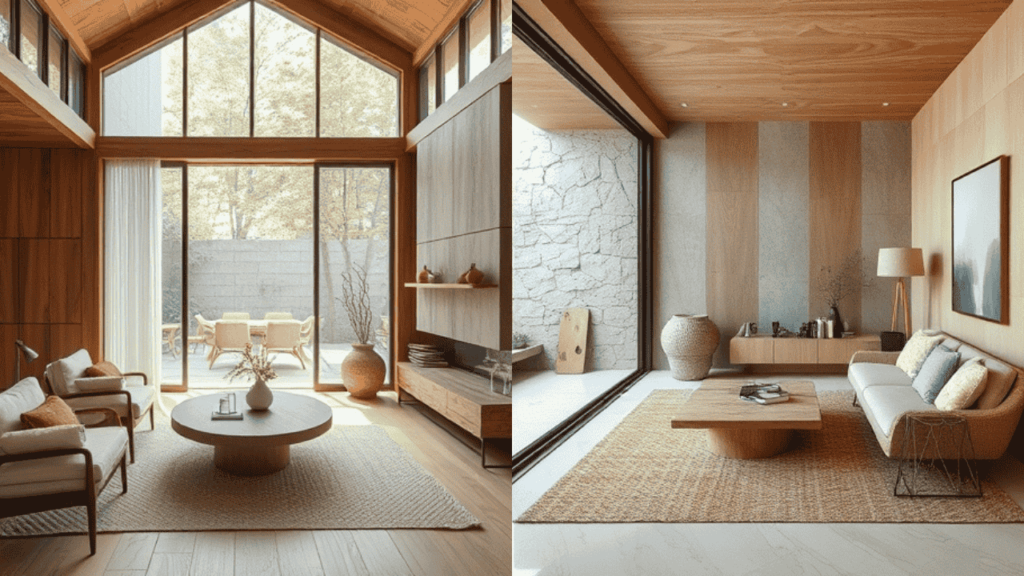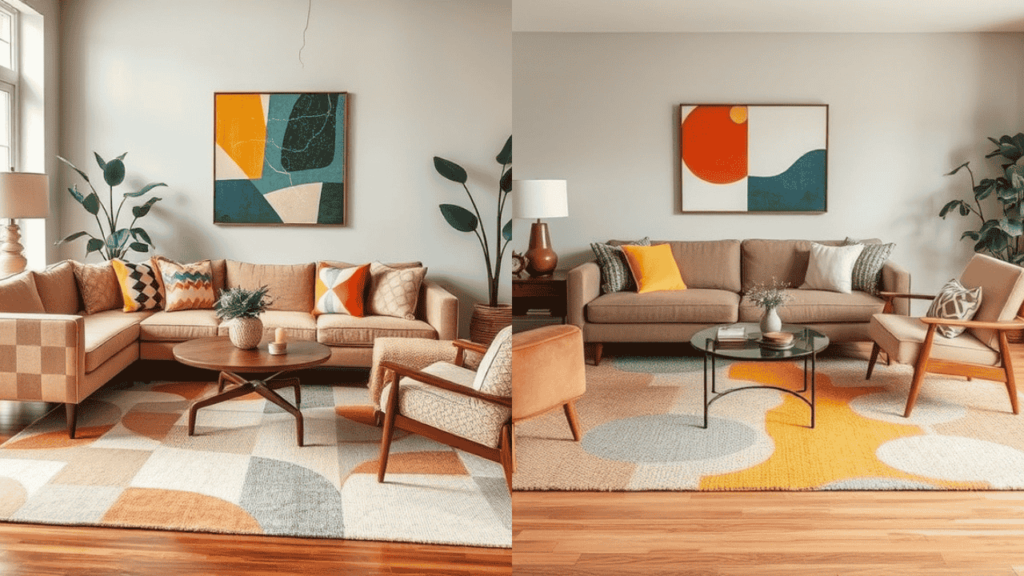
About Us
At our forefront, we redefine elegance and vibrancy in interior design. As prominent highlighter tile manufacturers, we specialize in crafting exquisite tiles that infuse spaces with captivating allure.
Latest Post
- Blog
- November 4, 2024
- Highlighter Tiles
- 12:02 pm
10 Most Mid-Century Modern Living Room

Mid-century modern living room design is a recurring style that enhances aesthetics along with a special concern for simplicity and clean lines while incorporating natural elements. This style developed in the 1940s-1960s and has very much remained relevant today, particularly to the lounge areas of the house where it is important that warmth and elegance blend in together quite effortlessly. If you’re looking to change the old decor or do something completely new, going for a mid-century modern living room is the best way to go if you want the classiness of the past but a modern feel at the same time.
This article aims to discuss the aspects of mid-century modern design as applied furniture, colors, and color combinations, as well as lighting, texture, and decorative details. Read on to find out how to make your living room a stylish but warm mid-century modern living room.
1. Understanding Mid-Century Modern Design Principles
As a preamble to design principles, it is probably prudent to clarify first the understanding of what mid-century modern living room design is. The origin of this style was in the designs that were envisioned for a post-war world that sought a cleaner, brighter, and more usable space. The following are the genres of this design style:
• Minimalism: Simple forms and unembellished lines that tend toward neatness.
• Functionality: Considered purpose in the ease of use of furniture and decorative items.
• Natural Materials: Wood, glass, leather and metal that promote authenticity and good craftsmanship.
• Organic Forms: The most agreeable aspects of this design style are the soft curves and the organic lines that form the visual look of the structure.
• Neutral and Earthy Colors: Colors that are predominantly derived from nature, but can occasionally have highlights of some vibrant color.
Using these design principles a mid-century modern living room area design is simple and functional which is ideal in creating a space that is aesthetic and practical at the same time.
2. Choosing Mid-Century Modern Furniture
Choosing the right furniture is a primary step to marking the mid-century modern living room style and its look. Typical primary pieces are moody, and functional and follow a somewhat organic form.

I. The Sofa
The most important furniture piece in the modern living room is the couch which is often the focal point of the entire room. And it would be best to consider the mid-century furniture styles for selection. Look for tapered-leg, low-profile sofas with clean lines. Gray, beige, or cream are neutral color palettes that also work well. But the middle section of the entire area does not have water melon tint. Mustard, deep teal or olive gives a strong and lively atmosphere.
Chesterfield and tufted sofas are basic but simpler armless box showcase couches do the work equally well. Leather or tweed or velvet when upholstered will give a luxurious look and feel with a vintage finish.
II. Traditional Armchairs and Accent Chairs
According to the tenets of the mid-century modern living room design style, chairs are not only practical elements of the house but also insightful works of art – sculptural in form. Mid-century design foresees its trademark armchairs’ having an angular structure, upholstered seats, and slender legs. The accent chairs should also have a wooden base or frame, or the original forms such as the Eames lounge chair or womb chair.
III. The Ideal Coffee Table
Thicker legs ensure that this type of mid-century modern living room coffee table is often a rectangle with rounded edges or rounded kidneys and is usually made of wood or metal. These tables are an intersection of minimalism and elegance and many times, they have geometric shapes. Teak or walnut coffee tables blend well with neutral sofas and can be accompanied with sculptural plants or neat stacks of art books.
IV. Credenzas and Sideboards
No living room can do without some sort of storage unit. Mid-century modern living room style allows for creative ways of addressing the issue of storage. Teak or walnut wooden credenzas, sideboards or low consoles are ideal for storing media, decorative elements or for books and records. Choose designs which have clean lines and few fittings to complement the sleek style that is the look.
3. Mid-Century Color Palette
The mid-century modern living room color palette draws inspiration from nature, featuring warm earthy hues as well as striking colors.
I. Warm Neutrals, Earthy Shades & Wooden Tones
Colors such as cream, beige, brown, and gray are classified as warm neutrals which make a steady base for the other design elements and are easy to use when introducing natural wood tones and other earthy shades. This intro can easily be strengthened by this idea and example of other designers say the same.
II. Adding A Splash Of Color
Mid-century modern living room styling infuses huge doses of color along with its distinctive minimalist features. The mid-century modern living room design works well when yellow, orange, teal, and green are used in accents of pillows, rugs, or a wall. They are also great for updating any monotony of brown tones when paired with neutrals.
III. Black and White with the Monochrome Color Palette
Many mid-century modern living room designs use black-and-white photographs or graphics on a monochrome surface as their key design element. Usually this is done in shades of gray or brown, where the interior remains looking clean as black and white accents maintain sophistication.
4. Natural Materials Are Primary in the Design

As a way of life, natural materials were a part of the design during the mid-century which is one of the hallmarks of mid-century modern living room design. Adding wood, leather, and metal elevates the overall design of the living area by infusing character, depth, and warmth into the space.
I. Wood Finishes
Mid-century modern living room furniture is characterized by the use of woods such as teak, walnut, and oak. Wood adds character to the room, black and medium finishes are in trend. You need to be consistent with the wood finishes to achieve the right look.
II. Leather and Textiles
The presence of leather for upholstery of sofas, armchairs, or ottomans creates a level of comfort and sophistication. Leather chairs can be accompanied with natural fabrics like wool, linen, or cotton in neutral and earthy tones. Desirable fabrics should have simplicity in terms of coziness, as they should not be seen too plush.
III. Metal Accents
Brass, chrome, and blackened metals enhance the mid-century modern living room style of a living room with an industrial vibe. Metal pieces make a regular appearance in the form of furniture and decorative elements like legs and light fixtures, providing subtle details to the wooden and leather accents.
5. Lighting in Mid-Century Modern Living Rooms
Lighting plays an important part of the ambience and also highlights the design. Mid century modern living rooms offer the opportunity to use lighting as a decorative element in addition to its functional purpose.
I. Statement Floor Lamps
Arched or tripod floor lamps are a signature look for mid-century modern living rooms. These art lamps serve the dual purpose of providing soft lighting and ornamental features. Such lamps can be finished in brass or black metal and are best placed next to the sofa or armchair for the perfect reading corner.
II. Chandeliers And Pendant Lights
Sputnik chandeliers and bubble light fixtures are classic additions that depict a mid-century modern living room. A pendant light or a chandelier above the coffee table brings the room together and provides a sophisticated point of interest. Seek out fixtures that incorporate clear forms and hues of brass, glass, or chrome, which match the area.
III. Table Lamps
Every office desk should have one or two very small table lamps. Place them on side tables or credenzas for task lighting purposes. Round or cone-shaped lamp shades combined with wooden or metal bases exude the mid-century modern living room modern look.
6. Textures and Patterns for Added Depth
Adding texture and patterns are added to the visual appeal of the living room, mid-century modern living room specifically, but does not distract from the outline and minimalist features of the space.
I. Rugs And Carpets
To define the seating area, place a rug that has bold colors or geometric patterns that consequently add warmth as well. Look for styles such as Berber, shag and flat-weave rugs made of natural fibers for a more grounded appearance. Colors that are geometric of abstract designs can be applied to elements that use warring colors to create a balanced design.
II. Throw Pillows and Blankets
Daybeds and armchairs are adorned with throw pillows and blankets made of natural fabric in muted colors which contribute coziness and texture to the furniture. Such in style bring pillows with a geometric or mod print in mustard, teal or orange that will not overpower the decor, but will add individuality.

III. Wall Decor and Additional Enhancements
Mid-century modern living room furniture walls decoration or wall art centerpieces often comprise of abstract geometry, bright colors or a simple design ethos. Above the sofa, framed pictures or posters may work as compelling paintings, whilst there are mirror frames made from wood or metal to provide texture and illumination into the backdrop.
7. Bringing Nature Indoors with Greenery
Another interesting and useful aspect relevant to mid-century modern living rooms is indoor plants. Plants enliven and bring colors into the space aside from the organic materials and earthy tones.
I. Use Strong and Architectural Foliage
Typical indoor plants that serve their purposes well are snake plants, rubber plants, and fiddle-leaf figs due to their strong shapes which help also to provide some height to the room. These plants are low-maintenance and thrive indoors making them suitable for living areas.
II. Type of Pots and where to Use Them
For a better organic look, use pot made of ceramics, clay or wood. Distribution of plants at different locations such as shelves, floor planters and coffee table increases texture and interest of the room.
8. Creating a Balanced, Functional Space
Just like in any other design principle including the mid-century modern living room design concept, aesthetics can be prioritized, but function should never be forgotten. Have an aim to combine aesthetics and functionalism without sacrificing the comfort of the space and how it can be used in practice on a day to day basis.
I. Sharpen for the comfort of the users
Even in all its ornamental beauty, mid-century modern living room furniture does not ignore comfort. Choose pieces that have thick, soft, and comfortable dark cushions, warm textures, and enough seats for relatives and visitors.
II. Reduce the number of childish toys
For a clear uncluttered and streamlined appearance, keep things organized and out of sight when not in use. Use credenzas, wicker baskets, or other stylish storage baskets for books, magazines, and general-purpose items used in the modern living room.
Conclusion
There is a great chance to create a mid-century living room in a modern style as it combines a bit of a vintage look with the comfort of a modern style. It centers on balance, function, and form so that your space can be sophisticated yet easy. You can remodel your modern living room by picking out stunning furniture, settling on a neutral color scheme, using decorative lighting, and introducing texture to it to achieve an inviting space that is both mid-century modern and practical.